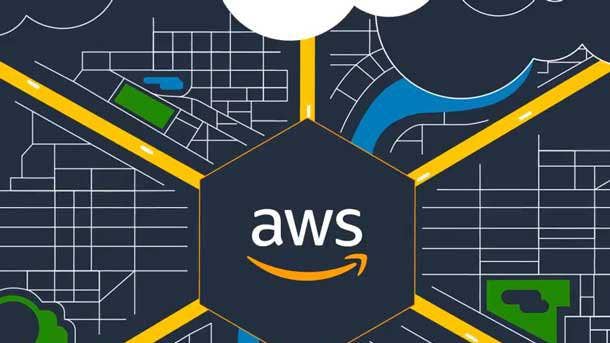The Top Things To Know About Becoming An AWS Partner
‘Our pace of innovation and what we offer to partners really is more significant than any of our competitors,’ says Kelly Hartman, the global head of the AWS Partner Network. ‘We spend a lot of time actually working with partners to look at things that matter to them and their customers. We really take a personalized approach to helping companies get there.’

Joining The APN
Solutions providers and other companies looking to become Amazon Web Services partners can tap the AWS Partner Network (APN) for programmatic, technical, business and go-to-market assistance to tailor growth plans and build their business around the largest public cloud provider.
AWS doesn’t disclose partner numbers for its global ecosystem of software and professional service firms beyond “tens of thousands,” but does say it added more than 35,000 new partners between 2016 and 2018.
“It's a large and rapidly growing ecosystem,” said Kelly Hartman, the APN’s global head.
Partners can make significant money and build long-standing businesses when working with AWS, according to Hartman.
“Our pace of innovation and what we offer to partners really is more significant than any of our competitors,” she said. “We spend a lot of time actually working with partners to look at things that matter to them and their customers. We really take a personalized approach to helping companies get there. A lot of companies look at building partner programs, and it's kind of like 'you figure out the program, and we'll engage with you once you figure it out.' We really help partners build to the specific things that customers are looking for.
CRN talked with Hartman about the top things that startups and other companies should know about joining the APN, from registering to funding opportunities, and the biggest mistake that some partners make along the way.

Where In A Company's Growth Trajectory Should It Consider Becoming An AWS Partner?
AWS partners with a breadth of companies in different stages of growth. It engages with private equity and venture capital firms about startups making decisions on a cloud provider, whether they're looking at building a new technology offering or using the cloud platform for their own companies.
“On the flip side, there's a lot of born-in-the-clouds that have actually just started doing really cool things -- innovating on behalf of customers -- and then come into our channel and say, ‘Hey, we've actually done this on our own without you. We see a lot of value, what can you offer, how do we work together?’” Hartman said.
“On the opposite end, we're seeing a lot of the more traditional kind of partners come into the ecosystem and really look to us for guidance: ‘We obviously have a well-established practice, we've been in business for 30-plus years or 20-plus years, but we realize we need to adjust our strategy and look at look at cloud and look at our channel differently.’ We have ways to help all of them.”

The First Step That Potential AWS Partners Should Take
Once companies establish they want to become an AWS partner, the first step is registering with the APN through the link on the AWS.Amazon.com/partners web page.
“They fill out a profile with us,” Hartman said. “Within 24 hours of registering, we have a call-back from a partner development representative that will get on the phone with the company and really lay out what are your goals, what is your customer base, what are you trying to do, and how can we help you? That really establishes that relationship and a contact for them.”

Consulting Partners Versus Technology Partners
Generally, companies know going into the process whether they should sign up as a consulting partner or technology partner based on what they offer, according to Hartman. And AWS updated its entry form to make it easier to know which path is right for them, she said.
“If you're looking at the traditional nomenclature, the systems integrators, value-added resellers, true consulting companies, MSPs (managed service providers) all fit in that consulting space,” Hartman said.
AWS is "greatly expanding" the definition of its technology partners and plans announcements later this year.
“If you look back a few years ago, technology partners was primarily synonymous with software providers, whether a SaaS (software-as-a-service) company or an (independent software vendor) ISV-type company,” Hartman said. “We're seeing new opportunities arise within cloud. If you look at the IoT (internet-of-things) space, for example…there are many more players. There's the silicon makers and device manufacturers of these edge devices. There's connectivity providers -- because all of these edge solutions need to have connectivity to the cloud -- all the way through to the more traditional consulting and technology (companies). So we're actually expanding that definition of technology.”
Some providers act as both AWS consulting and AWS technology partners, from smaller niche players to global system integrators that have technology offerings that they’ve created and can spin up a practice fairly seamlessly.
“But we generally try to have partners take a path, because what they're looking for from us in terms of...how do we build market and sell together essentially...really does differ based on the types of offerings that you have for customers,” Hartman said.

APN Navigate
AWS launched APN Navigate in May 2018 to provide a prescriptive path for companies to move through the APN and help them build, market, differentiate, sell and grow as a partner. The APN Navigate Foundations path helps guide new APN members through establishing fundamental building blocks to become successful AWS partners, from the Registered partner tier to the Select tier (the former Standard tier). The APN Navigate Specialization tracks help existing partners with the knowledge and tools to become specialists in a solution, industry, workload or service area on AWS.
“We have that personal help from our partner development representatives and partner development managers,” Hartman said. “They're all about sitting together with a partner and building a plan. But when it came down to the very prescribed -- what's the next step, what should I think about first, what's the best practice in this area -- we realized we had all this great content, and we weren't effectively bundling that to make it easier for those partner development reps and for partners. That was how Navigate was born.”
AWS’ content, including best-practice guides, had been more self-serve, Hartman said.
“We've structured them into the paths, where we have structured training as phase one, and then it's the structured enablement pieces,” she said. “The first piece is training to give that foundational knowledge of what you should know if you're looking at building an IoT practice, for example. Then you have the specific enablement pieces that fit along with that training after the training is completed.”
APN Navigate had 12 tracks or specialized practice areas by the end of 2018, and more were added this year in addition to the APN Navigate Foundations Path launched this past May.
“We were building Navigate based on having customers asking or partners asking for help to build specialized practices,” Hartman said. “But then what we realized is a lot of partners were asking us what does that journey look like from the Registered to Select tier, so we built the Navigate Foundations to provide that guidance in that same structure.”

Does AWS Have Individual Employees Aligned With Partners?
AWS has partner development representatives that start working with partners when they register for the APN.
“It's actually an individual that is assigned to that company to help them…and be the point of contact for all partner-related questions,” Hartman said. “Partner development reps help the partners with their journey and to meet all of their partnership goals with us, provide access to funding and help with all of those engagement questions and relationship questions.”
For Advanced tier technology partners and Premier tier consulting partners, AWS has partner development managers who have smaller numbers of partners assigned to them.
AWS also has partner sales or ISV sales managers that are in the field, helping sales teams figure out which partners to work with at the deal level.

APN Funding Options
AWS has updated information on APN benefits for AWS consulting partners and technology partners.
For Registered AWS partners moving to the Select tier, AWS funding is focused primarily on building skills and helping partners get employees trained and certified.
“We have discounted training for all partners who are registered members of the APN, and then there's access to additional funding for training,” Hartman said. “We can actually provide training directly on-site to them, and we do that quite frequently. Or we can provide discounted training, like training vouchers, so that they can actually go through AWS or third-party training.”
AWS funding benefits increase at the Select partner tier.
“Under partner opportunity acceleration, we have funding at a deal level for proof of concept,” Hartman said. “If you have a deal, and you really need to build up that proof of concept, then we'll actually co-fund that investment.”
Market development funds (MDF) and marketing funds kick in at the Select level, but they're more prevalent and more fully leveraged by partners in the Advanced and Premier tiers.
AWS recommends partners make sure they have something to market by building solutions and their practices, and figuring out their areas of expertise and what's meaningful to their customer base.
“That's generally where they tend to use more of the MDF dollars once that's really defined,” Hartman said. “The other area of investment is APN Marketing Central. We'll do scalable marketing , or we have syndicated content that we make available to them.”

Biggest Partner Mistakes
One of the biggest mistakes that companies make as they go through the APN process is trying to meet the requirements on paper, without actually building the practices and capabilities that the requirements represent and understanding what customers are seeking, according to Hartman.
“We really work with partners to say, 'what is your area of expertise?'” Hartman said. “Everybody has one, even if they think they're a generalist. Your area of expertise could be that you operate out of Germany, and you understand German regulations. Your location and your knowledge becomes an area of expertise. Or maybe your customer base is small business customers, and not everybody has scalable solutions that work well in the small business space.”
If new partners don't have a lot of experience building AWS solutions, they should use AWS internally first, Hartman advised.
“Or, if you have customers in the traditional space, but you don't necessarily have AWS customers, we'll help you build the practice to support those customers,” she said. “But there may be partners that just try to check the boxes -- they want to skip the step of actually learning and becoming an expert in AWS. Or they'll get people trained and certified, but those are the people that they don't necessarily send out in the field for the deals.”
“My advice is don't make it a paper practice -- really ask the partner development rep that you're working with what is the purpose of this requirement, because every single requirement ties back to a best practice or what customers are directly asking us for when they're looking to engage a partner.” Hartman said.
The other mistake made by partners is trying to build their companies too fast by trying to dabble in too many areas at once, according to Hartman.
“Definitely learn and work on what's in your wheelhouse, and build on it from there, versus trying to do everything all at once,” she said. “Partners really have to have a good foundation of AWS, understand our services or our building block services, and then grow from there. In general, as we're building new categories and new products…the best thing to do is figure out how that organically fits into your growth. Our partners are finding new solutions and new innovative areas of services because it's a natural extension.”